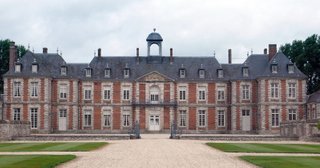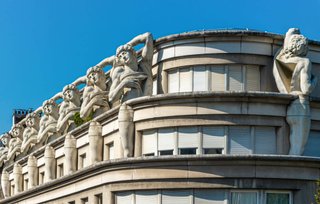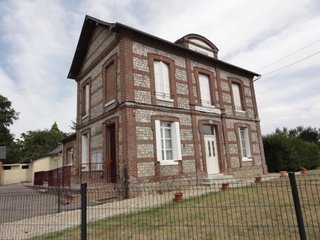
The Château de Galleville: An Architectural Jewel in Doudeville
In the heart of Normandy, in the charming commune of Doudeville, lies a hidden treasure of French architecture - the Château de Galleville. Commissioned by the Pierre Roque de Varengeville family in the seventeenth century and superbly restored after a devastating fire in 1943, the castle offers a harmonious combination of classical French architecture and local Mannerist influence, testifying to the rich history of the region.

A rich family heritage
The Château de Galleville is inextricably linked to the history of the Roque de Varengeville family. This illustrious lineage, one of whose members married Marshal de Villars in 1702, played an essential role in local and national history. Their vision and love for art and architecture led to the construction of this magnificent building, which remains a testament to their influence and refinement today.
An architectural Renaissance
The castle enjoyed a second life after a devastating fire in 1943. Under the direction of architect Robert Flavigny, the building has been carefully restored, with attention to detail and respect for the original architecture for which it is famous today. This restoration not only preserved the historical heritage of the castle, but also highlighted the beauty and complexity of its architecture.
A classic French refinement
The Château de Galleville is a masterful example of classical French architecture. The principles of harmony, symmetry and proportion, characteristic of this period, are wonderfully illustrated.
The main building, rectangular, is distinguished by its main façade, dominated by a triangular pediment supported by four Corinthian pilasters. The richness and delicacy of the ornaments, such as the sculptures on the façade and the roof à la Mansart, denote the refinement and elegance of classical French art.
A Norman Mannerist Heritage
Despite its roots in classical French architecture, the Château de Galleville also bears the marks of the Norman Mannerist influence. This trend, which appeared in northern France during the Renaissance, is characterized by a certain freedom in the use of classical elements, thus giving originality to the whole.
This is manifested in the hexagonal turrets that frame the main body of the castle, adding a local touch to the whole. Their asymmetrical layout and bulbous roof, typical of Norman Mannerism, contrasts with the rigor of classical architecture, creating an interesting dialogue between the two styles.
The Gardens: An Extension of the Architectural Work
The park that encloses the castle is another essential element of the architectural work. Designed in a French style, these gardens are characterized by their perfect symmetry and careful layout. They extend over more than 15 hectares, and are composed of flower beds, paths lined with secular trees, and an exceptional vegetable garden. These green spaces extend the majesty of the castle and testify to the French art of living.
.
Posted on 05/07/2023 by
Cyril POTTIER
Entrepreneur and founder of the agency GABRIEL FRANCE, my career began in the field of accounting, but my passion for real estate led me to this captivating adventure. With GABRIEL FRANCE, we bring our expertise to every stage of real estate, from purchase to sale, including rental management. Through each transaction, our goal is simple: to ensure your satisfaction.




